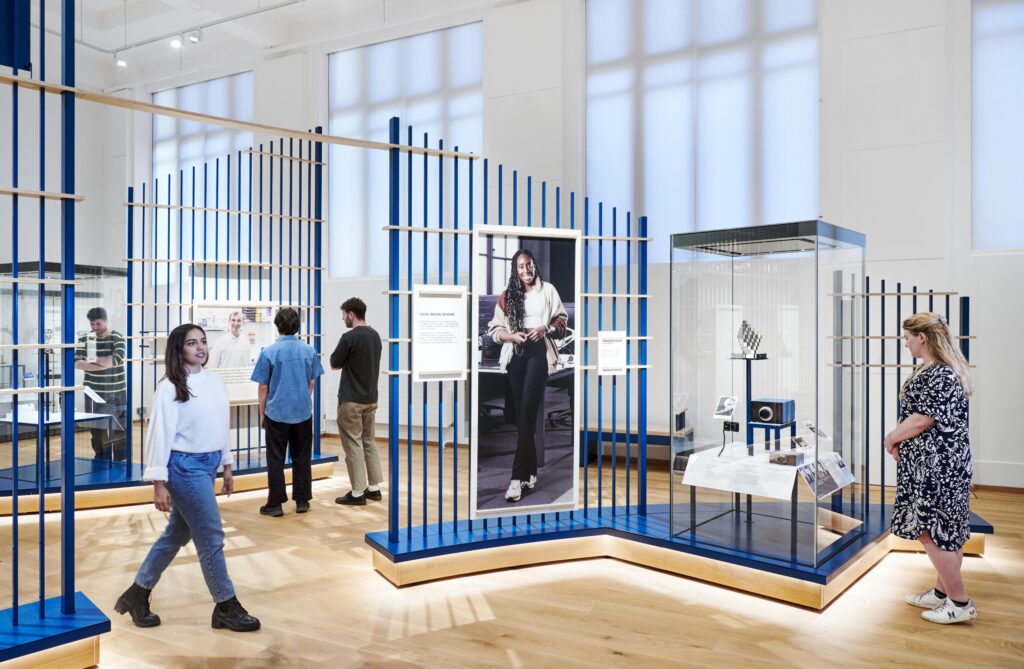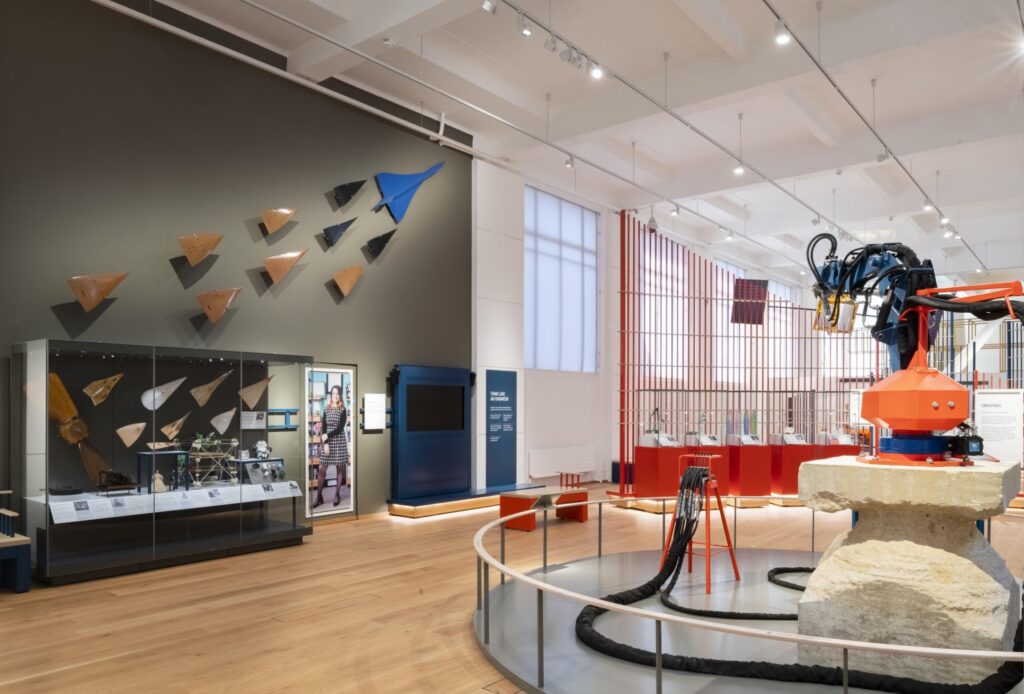At the heart of this gallery are richly illustrated, characterful stories from 60 engineers working in a broad range of industries, such as farming, fashion, robotics and medicine. It shines a light on their lives, motivations, ways of thinking, and what they do day-to-day.
Research shows young people’s knowledge of engineering is low, and what they do know is often influenced by stereotypes and misinformation. To counteract this, the human stories on display aim to inspire young visitors to pursue engineering careers and challenge the common misconceptions about what engineers do, offering a fresh perspective on the breadth and diversity of these important roles.

Engineers also boasts over 70 amazing objects which visitors can discover. From ground-breaking inventions like a cutting-edge surgical robot arm to the world’s first digital colour camera, a miniature atomic clock which the entire GPS system depended upon, and even a communications satellite suspended from the ceiling.
The space also celebrates our engineering heritage and showcases some of these remarkable innovations through the global lens of the Queen Elizabeth Prize for Engineering – the world’s leading award for engineers – with current and past prize winners featured throughout.
Highlighting a breadth of promising new work which builds on the successes of previous QEPrize winners, these stories and objects sit within four distinct sections:
Bodies looks at how engineers are vital to our health and wellbeing and showcases innovations developed to deliver precision treatments to people who need them most.
In Lives, LED lighting and digital imaging sensors illustrate how engineers have transformed how we light and interpret our world ever more successfully and sustainably.

In Connections, GPS, internet and web technologies represent engineering as a connected practice and shows how engineers enable the networks humanity relies on to thrive.
And the section on Creating reveals how engineers think in particular ways, defining and solving problems, adapting and improving, visualising outcomes, thinking about systems, and learning from failures. Their creative ways of thinking are central to developing amazing innovations which can change the world.

Also on display is the Ventura CPAP (Continuous Positive Airway Pressure) breathing device for COVID-19 patients, rapidly devised in just 100 hours by University College London and collaborators; the water kettle of pioneering steam engineer, James Watt, embodying the inception of steam power, and a stunning 3D Concorde model display, charting the evolution of the supersonic jet’s wing design over time. At the centre of the gallery is the striking ATLAS PROTOTYPE sculpture, an articulated hydraulic arm standing atop a solid carved concrete block, made by artist and speculative engineer, James Capper.
The gallery opening was timed to coincide with International Women in Engineering Day on Friday 23 June to spotlight the longstanding inequality in the number of young women being accepted onto university engineering degrees and in the UK engineering workforce.
As part of the launch activities, a speed mentoring event was held where a group of London school students spoke with early career women engineers, including QEPrize Ambassadors, to learn and be inspired by where engineering could take them. The students were then able to browse the range of young female engineers from different backgrounds featured in the gallery and see their exciting real-world solutions that help society to flourish.

Situated on Level 1 of the museum, Engineers is located adjacent to Technicians: The David Sainsbury Gallery, which opened in November 2022. These complementary galleries showcase a rich suite of personal stories and innovations that impact our everyday life.
The fresh, contemporary design of the gallery has used carefully selected sustainable building materials, including a UK-based composite recycled plastic made primarily of yoghurt pots, as well as low energy LEDs, reflecting engineers’ role in building a sustainable future.
The opening of Engineers marks a decade of transformation of the Science Museum’s public spaces, and has seen the development of award-winning permanent galleries, including popular interactive children’s gallery Wonderlab: The Equinor Gallery, Zaha Hadid Architects-designed Mathematics: The Winton Gallery, Science City 1550-1800: The Linbury Gallery, and the acclaimed Medicine: The Wellcome Galleries – the largest medicine galleries in the world.
Engineers has been generously supported by the Queen Elizabeth Prize for Engineering (Major Funder) and MathWorks (Major Sponsor).
Book your free admission ticket to the museum to visit Engineers.
